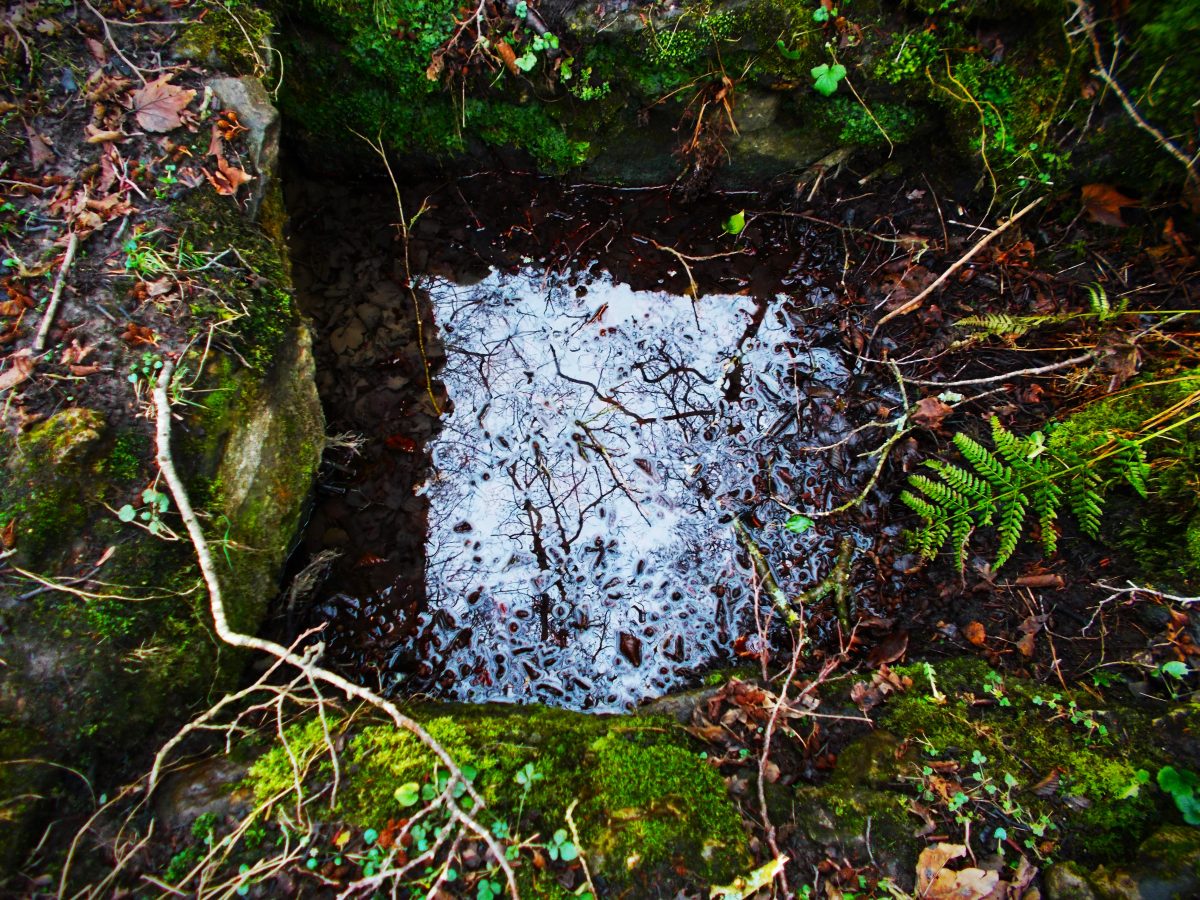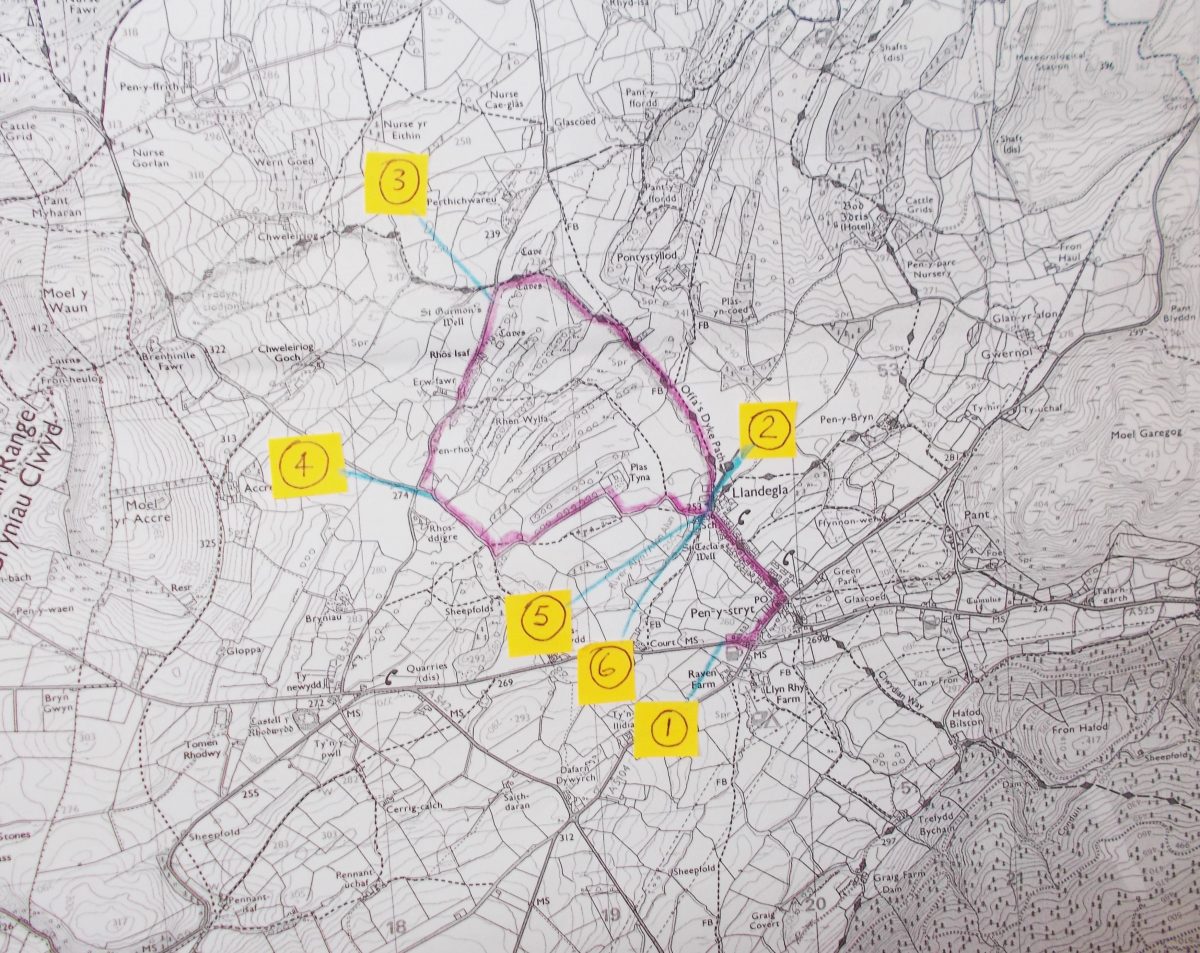The Well of Saint Tegla
The Well of Saint Tegla
This is our sixth walk from our guest blogger Julie Brominicks the author of The Edge of Cymru. They are all accessible by public transport and each one will have a simple map for you to follow. We have another 2 planned for you over the next few months, so look out for them on our social media channels. We want to inspire you explore our beautiful part of the world that little bit deeper.
You cannot mistake the vibe. The gentle walk prepares you for it, meandering as it does along the banks of Afon Alyn and down sweetly curving lanes on which the only traffic is a quadbike bumping into a field (and an ambush of wrens). At the well is a sense of something quiet and ancient and sacred.
Sequestered by a thicket of thorn, this square of water snares the trees’ reflection. For centuries it has shone between these stones built carefully around a spring in an alder grove. Like the church in the village, the well is dedicated to St Tegla. Or Tecla or Thecla. According to the New World Encyclopaedia, Thecla was a follower of St Paul and is mentioned in one of the writings of the New Testament where it is claimed, her devotion was ‘rewarded by miraculous signs including several dramatic rescues from martyrdom by fire and wild beasts.’ Thecla was venerated widely in late antiquity and is recognized today by both Roman Catholic and Eastern Orthodox churches. So how did she end up in Cymru? Another theory (posited by Tristan Gray Hulse) is that this Tegla was a local saint about whom we now know nothing.

We do though, have various accounts from more recent centuries that the well was believed to cure epilepsy, and though the accounts varied, they went something like this. The afflicted person would wash in the well, toss in fourpence, then walk around it three times carrying either a hen if they were female, or a cockerel if they were male, while reciting the Lord’s Prayer. They then walked three times around the church before finally sleeping under the altar with the unfortunate chicken, to which (if it proceeded to die) the disease was transferred.
It is not quite yet spring. The pink cupcakes on the counter, and streamers on the ceiling of the community café are to celebrate the saints Dwynwen and Valentine of January and February rather than Tegla. The fields are primordial swamps. But catkins wobble and tight buds button the hedges. And here beside the well, despite the wet wreck of twigs and last year’s alder cones, and the sound of corvids being shot at, there is a vibrancy to the air and violet leaves pushing through dark earth.
The Bus
Both the 51 and the X51 between Wrecsam and Dinbych stop at The Crown (which is no longer open) on the A525 at the edge of Llandegla, from where it is a quarter of a mile walk into the village. This service runs roughly once every two hours from Monday to Saturday.
For more information about public transport in Sir Ddinbych see https://www.denbighshire.gov.uk/en/parking-roads-and-travel/public-transport/public-transport.aspx
To plan your bus journey use https://www.traveline.cymru/
Don’t forget that a 1bws ticket for £6.50 gives you unlimited travel in North Cymru on all services.
The Walk
This is a gentle 3-mile circular walk via the church of St Tegla, along the banks of Afon Alyn on the Llwybr Clawdd Offa (Offa’s Dyke Path) and returning to the village and St Tegla’s Well along quiet lanes. In late spring the hedgerows are in leaf, the birds in full throttle, and the wildflowers emerging. The lane at Plas Tyna just south of Llandegla is part of Sir Ddinbych’s roadside Nature Reserve project. Here you will find ancient species-rich hedgerow plants such as wood avens and giant bellflower, woodland plants like water avens, and among the calcareous grassland plants, early purple orchid and cowslip. You can make the walk even shorter by making straight for the well from the bus stop – about half a mile. Don’t forget to visit the wonderful community shop and café opposite the church. The lanes are quiet and well-used by local walkers, but take all the usual precautions for road-walking.
- From the bus stop, follow the signs to the village, noting the Community Shop and Café opposite the church.
- Follow the Llwybr Clawdd Offa (Offa’s Dyke Path) signs heading north from the church. Follow this route along Afon Alyn, until it reaches the road.
- Turn left along this quiet hedged lane, noting the escarpments to your left, and enjoying the bird activity, till reaching the crossroads.
- Now turn left towards Llandegla. The lane is divinely tortuous and undulating. This is where you will find wildflowers in the verges.
- On reaching the stone bridge crossing Afon Alyn (where you will also find a community picnic site on the riverbank) turn right into the field, following signs to the well which you will find over a footbridge in an alder grove.
Continue through the village to the Church of Sant Tecla – which is equipped with tea-making facilities for walkers. Meanwhile the not-to-be-missed Community Shop opposite the church is a great place to wait if you have time to kill. From here return to the bus-stop

